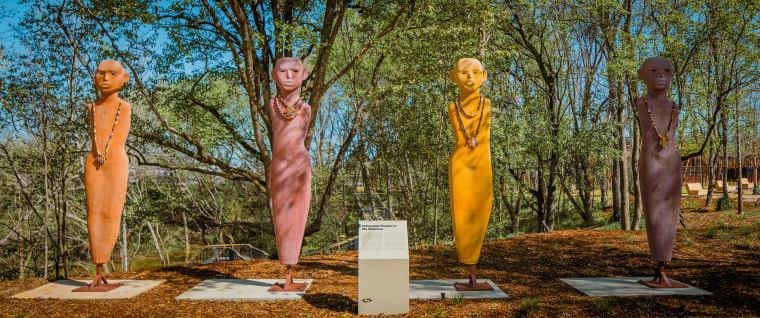The third addition, the sculpture park, is an effort to humanize the experience of the enslaved person living on a plantation. The centerpiece of the park will be a 100-by-40 feet monument to freedom angled like an open book, listing roughly 100,000 known surnames of people who were emancipated in 1865. The monument is billed as the first of its kind to commemorate the more than 10 million people who were enslaved in America.
Stevenson said in a wide-ranging interview with NBC News’ Lester Holt that he didn’t have “any interest” in visiting plantations, but finally did. The experience was revelatory. “I was intrigued by the authenticity of those places,” he said of the plantations. “And I thought about whether we could create a space like that, centered on the lives of enslaved people and tell this history.”

teaching apparatus at a time when there are mounting attacks to eliminate Black history from being taught in public schools.
Equal Justice Initiative
Stevenson, who is also the founder of the Equal Justice Initiative, which has helped free more than 140 death row inmates wrongfully convicted, said the main house on plantations was so prominent that it “marginalized” the slave dwellings.
“And so, creating a space like this that has some historical significance, and then building a kind of a narrative around this land was the objective,” he said. “And we see this as a place to have a deep, immersive engagement with the legacy of slavery, and primarily the lives of enslaved people, so we can have a deeper understanding of that. … It’s about humanizing it.”
Source: | This article originally belongs to Nbcnews.com










